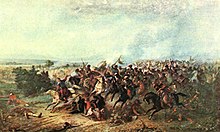
Quick Facts
Biography
Koca Sinan Pasha (Turkish: Koca Sinan Paşa, "Sinan the Great"; 1506–3 April 1596) was an Ottoman grand vizier, Ottoman military figure, and statesman. From 1580 till his death he served five times as Grand Vizier.
Origin
Sinan Pasha, also known as Koca Sinan (Sinan the Great), was born in Topojan in Luma territory and was of Albanian origin. In a Ragusan document of 1571 listing members of the Ottoman Sultan's governing council, Sinan is described as having been a "Catholic Albanian" by origin. His father was named Ali Bey and Sinan Pasha had family ties with Catholic relatives such as the Giubizzas. Austrian orientalist Joseph von Hammer-Purgstall called him the ‘‘unbridled Albanian’’. Mustafa Ali of Gallipoli repeatedly criticized Sinan to have promoted an Albanian clique in the administration.
Career
Sinan Pasha was appointed governor of Ottoman Egypt in 1569, and was subsequently involved until 1571 in the conquest of Yemen, becoming known as Fātiḥ-i Yemen ("Victor of Yemen").
In 1580, Sinan commanded the army against the Safavids in the Ottoman–Safavid War (1578–1590), and was appointed grand vizier by Sultan Murad III. He was, however, disgraced and exiled in the following year, owing to the defeat of his lieutenant Mehmed Pasha, at Gori (during an attempt to provision the Ottoman garrison of Tbilisi).
He subsequently became governor of Damascus and, in 1589, after the great revolt of the Janissaries, was appointed grand vizier for the second time. He was involved in the competition for the throne in Wallachia between Mihnea Turcitul and Petru Cercel, and ultimately sided with the former (overseeing Petru's execution in March 1590). Another revolt of Janissaries led to his dismissal in 1591, but in 1593 he was again recalled to become grand vizier for the third time, and in the same year he commanded the Ottoman army in the Long War against the Habsburgs, he was faced with massive casualties on the northern front, which was weakened by the death of Bosnian commander Telli Hasan Pasha during the Battle of Sisak. In 1594 during the Uprising in Banat, he ordered for the relics (remains) of Saint Sava to be brought from Mileševa to Belgrade, where he then had them set on fire, in order to discourage the Serbs.

In spite of his victories he was again deposed in February 1595, shortly after the accession of Mehmed III, and banished to Malkara. In August, Sinan was in power again, called on to lead the expedition against Prince Michael the Brave of Wallachia. His defeat in the Battle of Călugăreni, the Battle of Giurgiu, and the series of unsuccessful confrontations with the Habsburgs (culminating in the devastating siege and fall of Ottoman-held Esztergom), brought him once more into disfavour, and he was deprived of the seal of office (19 November).
The death of his successor Lala Mehmed Pasha three days later caused Sinan to become grand vizier for the fifth time. He died suddenly in the spring of 1596, leaving behind a large fortune. Sinan Pasha is buried in Istanbul near the Grand Bazaar.
Legacy
Sinan Pasha became grand vizier five times between 1580 and his death in 1596. He had many rivals but he was also a very wealthy man. During his lifetime Sinan Pasha was criticized by Ottoman bureaucrats such as Mustafa Âlî who wrote that Sinan promoted Albanians into the Ottoman government and military. Contemporary Turkish historians also note that he remained close to his heritage and would give those of Albanian stock preference for high-level positions within the empire. In 1586, at his request, Sultan Murad III issued a decree exempting five villages in Luma from all taxes. Sinan Pasha constructed the fortress of Kaçanik in the Kosovo Vilayet with an imaret (soup kitchen), two hans (Inn), a hamam (Turkish bath) and a mosque that still bears his name.
In 1590, he had the Pearl Kiosk built above the seaward walls on the sea of Marmara. It served as Murad III's final residence before his death. One of his final projects in Constantinople was a külliye completed in from 1593 to 1594 by Davut Aga, the chief imperial architect of the time. It is distinguished by the complex masonry and decorations of its türbe and sebil.
He was a major builder of caravanserais, bridges, baths and mosques. These included the town of Kaçanik in Kosovo, important buildings in Thessalonika and Belgrade, as well as in Istanbul and other countries in the Arab world.
